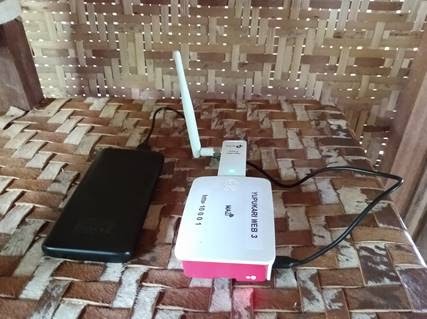3.8 Network sharing
2. DIY Networks
An alternative solution is a DIY network. A DIY network is a local wifi zone independent of the Internet. The key component of such a network is a computer unit that acts as a ‘server’ which can be accessed through a wifi signal that the unit broadcasts. Anyone with a phone, tablet or laptop can access the information available within the DIY network if they are in range of the wifi signal.
The video below gives an example for such DIY networks from the project MAZI, which created software and toolkit for setting up local DIY networks. The project MAZI has since ended, but there are alternative software you can use for setting up such networks, for example DietPi.
One of the most popular computer units for DIY networking is a Raspberry Pi – an extremely cheap computer originally developed in the UK to promote teaching of basic computer science in schools. Raspberry Pi computers are now used for all sorts of applications, including DIY networks. As of March 2018, 19 million Raspberry Pi units have been sold worldwide. Not all Raspebrry Pi models are made with Wifi capabilities, but the ones that are, retail for as little as £25/$40.

The use of these Raspberry Pi DIY networks are limited to people in the Wi-Fi range of the computer unit, usually about 25 meters. However, the range can be significantly extended using cheap antennas. But like all wifi networks, objects such as walls and vegetation can significantly reduce range.
